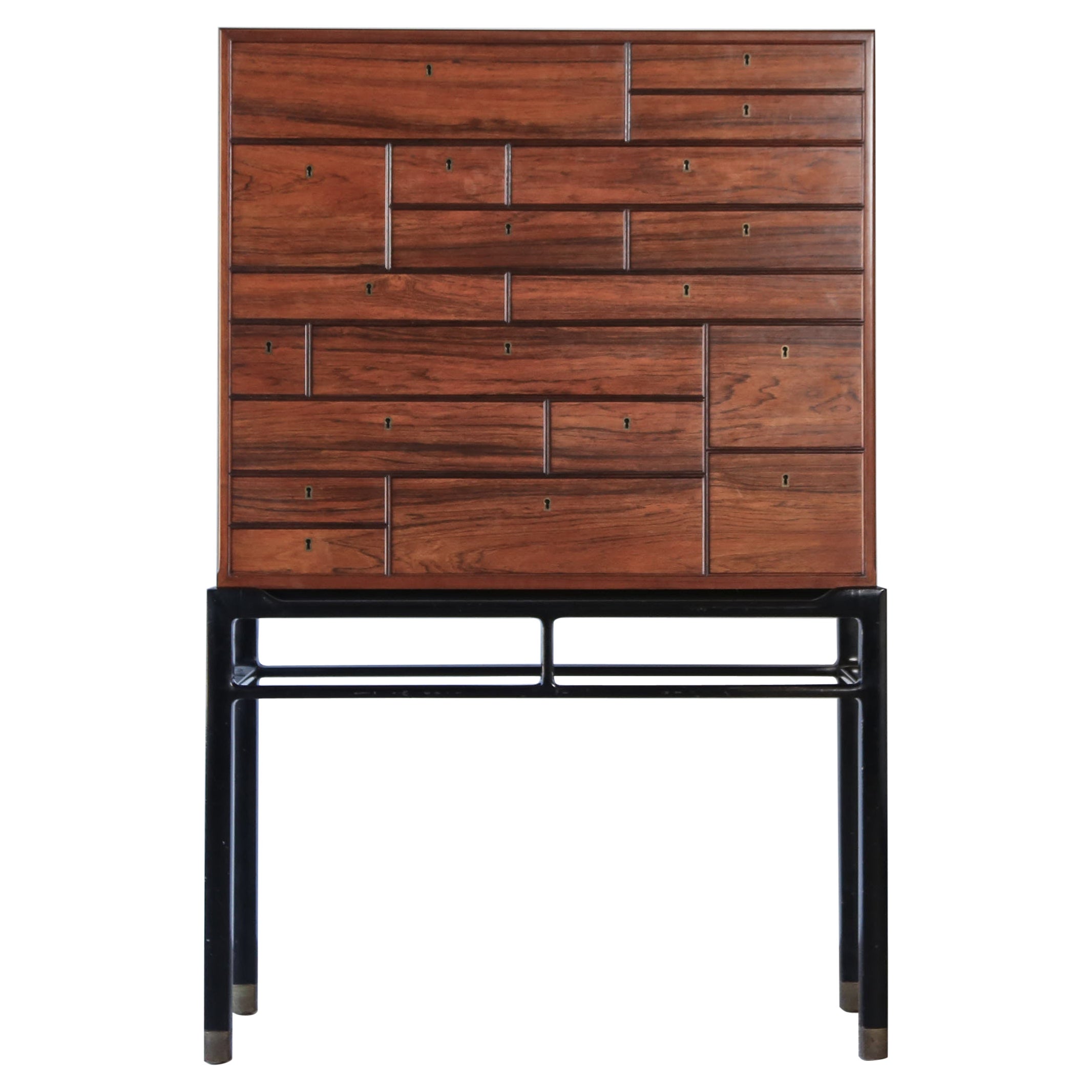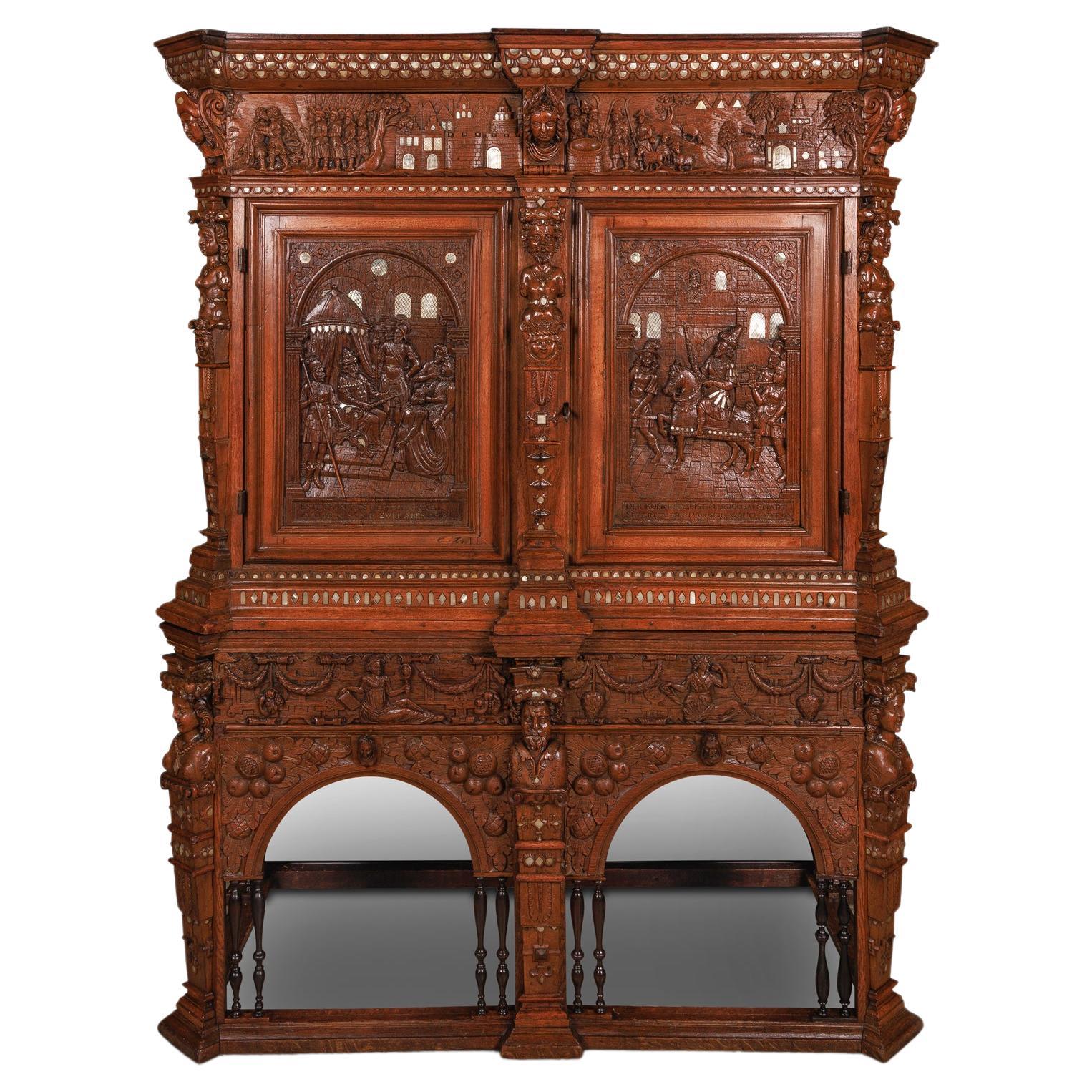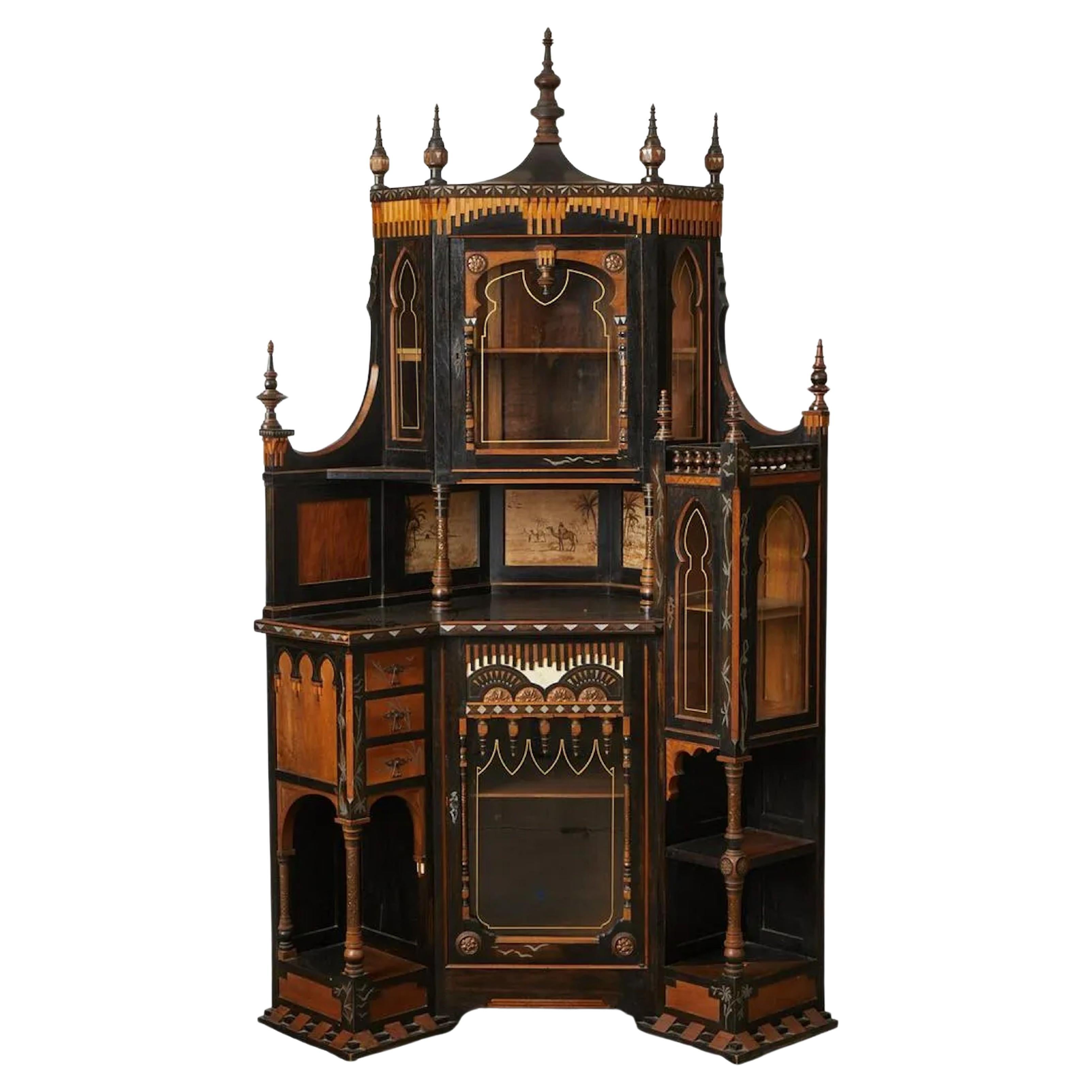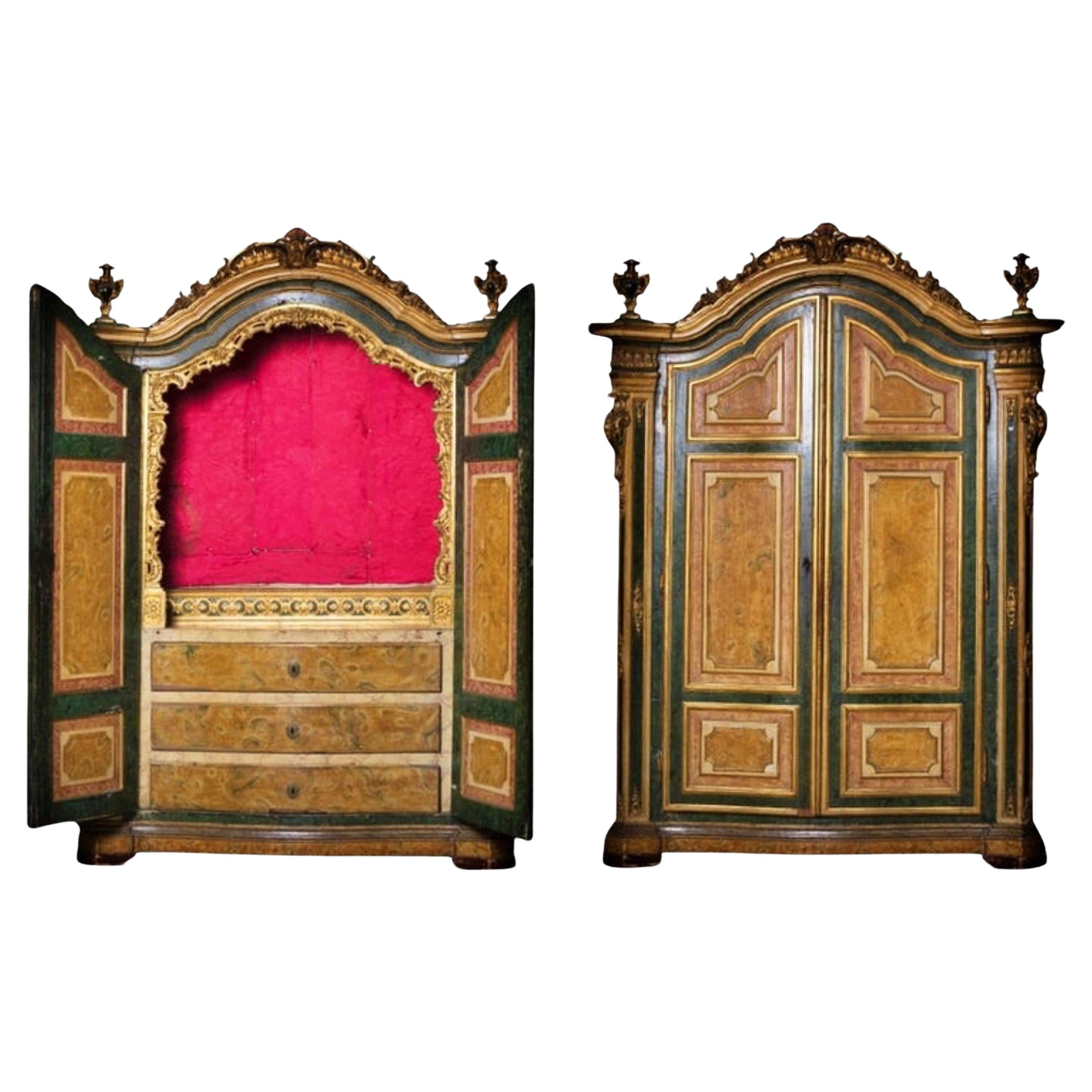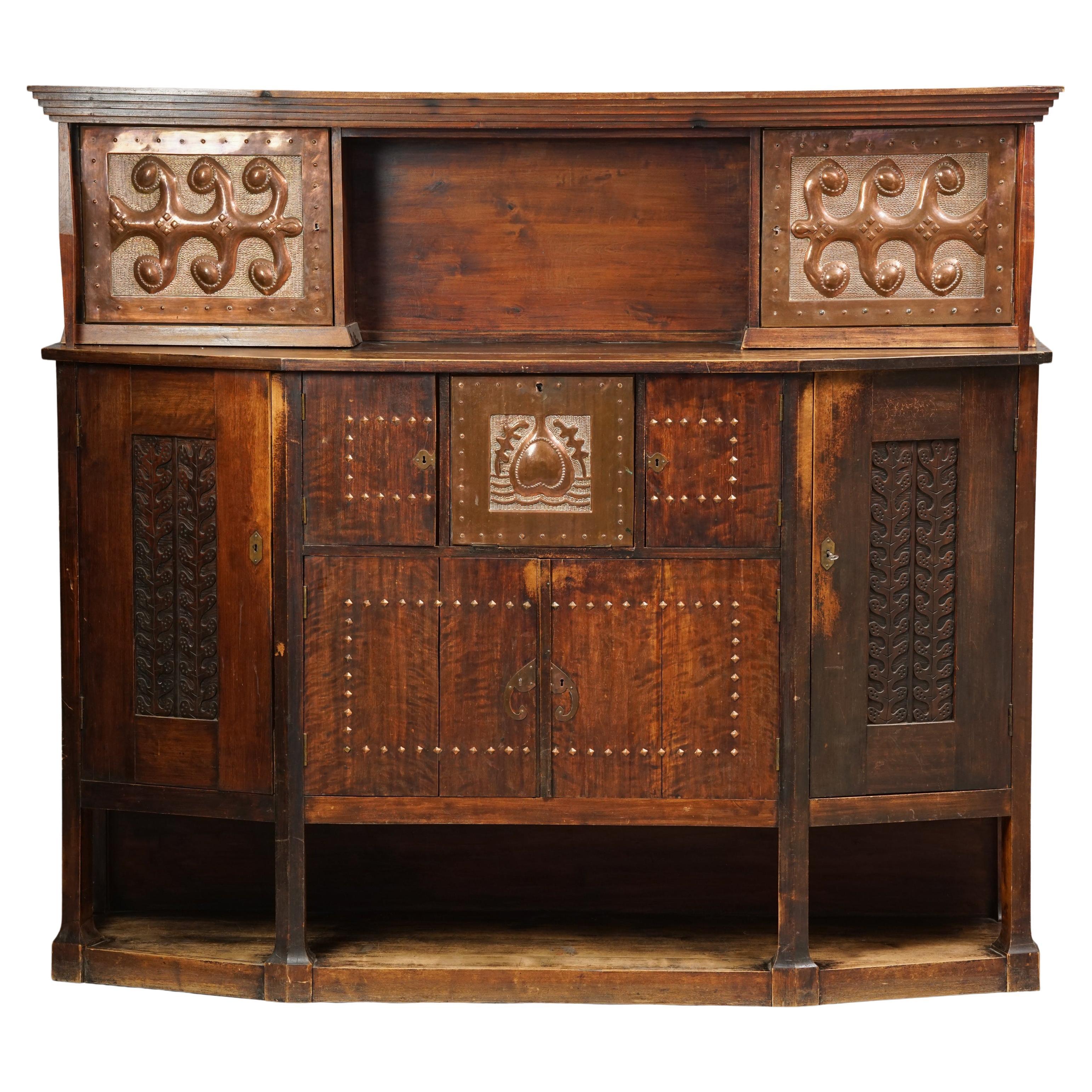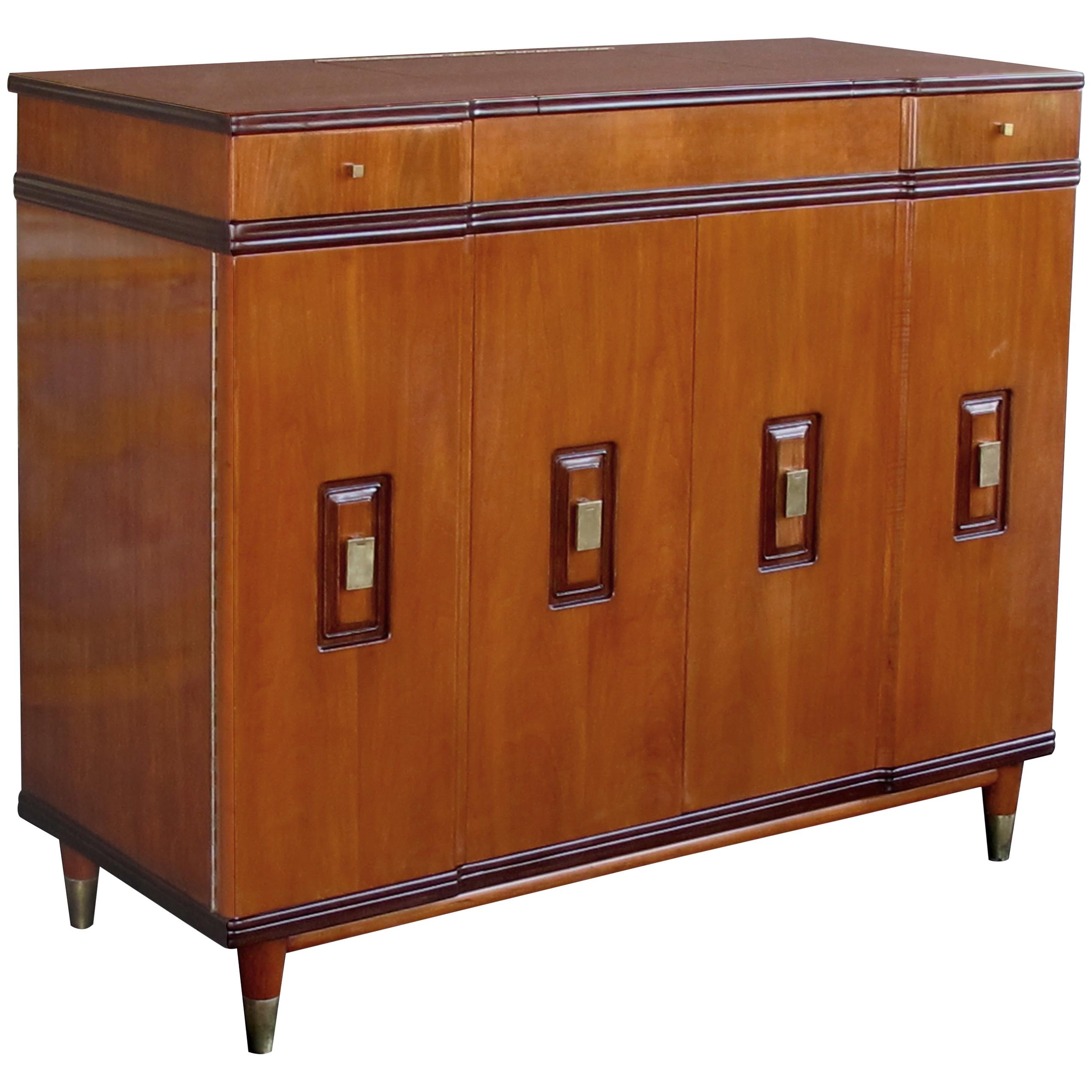Rare and Important Midcentury Bench/Cabinets- Eames and Saarinen -Organic Design
About the Item
- Creator:
- Dimensions:Height: 35 in (88.9 cm)Width: 72 in (182.88 cm)Depth: 18 in (45.72 cm)
- Style:Mid-Century Modern (Of the Period)
- Materials and Techniques:
- Place of Origin:
- Period:
- Date of Manufacture:1941
- Condition:Refinished. Wear consistent with age and use. Honest marks, abrasions, rubbing throughout as is expected with age and use. Structurally sound. Some veneer work done.
- Seller Location:BROOKLYN, NY
- Reference Number:1stDibs: LU1793236162342
Charles Eames
The legacy of Charles Eames looms large in design. In partnership with his wife, Ray, Charles was at the forefront of pioneering innovation in the use of molded plywood for furniture making. The Eameses’ cheerful and inviting work has endured among the most important advancements in the history of 20th-century design.
Together, visionary mid-century modern duo Charles and Ray Eames introduced a wide range of renowned furniture to the postwar market, including iconic designs such as the Eames lounge chair and ottoman, the wildly colorful birch plywood-and-plastic-laminate Eames storage unit, the Eames compact sofa and more. The designers were trailblazers in molded plywood furniture and brought lively organic form to metal and plastic.
Charles Eames studied architecture at Washington University in St. Louis. He traveled to Mexico and Europe, and experienced firsthand the work of designer-architects Le Corbusier and Ludwig Mies van der Rohe. In 1930, upon returning to Missouri, Eames opened an architecture practice with Charles M. Gray but later moved to Michigan in 1938. He received a fellowship at Cranbrook Academy of Art, which would become a breeding ground for the stars of mid-century design. Eames continued his architecture studies at Cranbrook and also taught in the design department.
In 1940, Eames met his future wife, artist and designer Beatrice Alexandra "Ray" Kaiser, who was studying at Cranbrook under Abstract Expressionist painter Hans Hofmann. Charles teamed up with another Cranbrook instructor, Finnish-American designer Eero Saarinen, to explore the possibilities of plywood for use in furniture design.
With support from Ray, Charles and Eero created chairs and case pieces and submitted them to the “Organic Design in Home Furnishings” competition at the Museum of Modern Art in New York City — among them was the groundbreaking organic Side chair made of molded plywood with maple legs. It was upholstered by Heywood-Wakefield. This exhibition is considered critical by many to the popularization of what is known as mid-century modernism. Eames and Saarinen won first place for their submissions to the competition.
Charles and Ray were married in 1941 and soon after moved to Los Angeles, California, and lived in an apartment building designed by architect Richard Neutra. Charles worked on set design at MGM, and at night, in a humble workshop they established in the guest bedroom, he and Ray experimented with molded plywood on a homemade device they called the “Kazaam!” machine. In 1942, the couple won a U.S. Navy contract to create molded plywood leg splints that would be used to support wartime medical efforts. Soon, the Evans Product Company was making the splints and the Eameses opened the famed Eames Office and studio.
The Eameses’ innovative use of wire framing, molded plywood and applied fabrics caught the attention of many notable figures in interior design and architecture, including George Nelson, director of design at Herman Miller, a now-legendary modern furniture manufacturer. The company enlisted the Eameses’ talents and was eventually home to the couple’s classic pieces such as the Eames DCW chair and the DCM chair.
Find an extensive array of vintage Charles Eames seating, tables and case pieces on 1stDibs.
Eero Saarinen
Through his work as an architect and designer, Eero Saarinen was a prime mover in the introduction of modernism into the American mainstream. Particularly affecting were the organic, curvilinear forms seen in Saarinen’s furniture and his best-known structures: the gull-winged TWA Flight Center at John F. Kennedy airport in New York (opened 1962), Dulles International Airport in Virginia (1962) and the Gateway Arch in St. Louis, Missouri (1965).
Saarinen had a peerless modernist pedigree. His father, Eliel Saarinen, was an eminent Finnish architect who in 1932 became the first head of the Cranbrook Academy of Art in suburban Detroit. The school became synonymous with progressive design and decorative arts in the United States, and while studying there the younger Saarinen met and befriended several luminaries of mid-century modernism, among them Harry Bertoia and Charles and Ray Eames.
At Cranbrook, Saarinen also met Florence Schust Knoll, who, as director of her husband Hans Knoll's eponymous furniture company, would put Saarinen’s best designs into production. These include the Grasshopper chair, designed in 1946 and so named because its angled bentwood frame resembles the insect; the Tulip chair (1957), a flower-shaped fiberglass shell mounted on a cast-aluminum pedestal; and the lushly contoured Womb lounge chair and ottoman (1948). In his furniture as in his architecture, the keynotes of Eero Saarinen’s designs are simplicity, strength and grace.
Find vintage Eero Saarinen tables, chairs and other furniture on 1stDibs.
- ShippingRetrieving quote...Ships From: BROOKLYN, NY
- Return PolicyA return for this item may be initiated within 1 day of delivery.
- Rare Midcentury Eames ESU 400-C for Herman Miller 1st SeriesBy Charles and Ray Eames, Herman MillerLocated in BROOKLYN, NYFor your consideration is this Charles and Ray Eames designed ESU 400-C for Herman Miller. This is the rarest 1st series ESU (Eames Storage Unit) A versatile case piece that makes a ...Category
Vintage 1950s American Mid-Century Modern Cabinets
MaterialsChrome, Steel
- Midcentury Eames ESU 200 for Herman MillerBy Charles and Ray Eames, Herman MillerLocated in BROOKLYN, NYFor your consideration is this ESU ( Eames Storage Unit 200 ) designed by Charles and Ray Eames for Herman Miller. This is the first series with multicolored panels c 1950. Original...Category
Mid-20th Century American Mid-Century Modern Cabinets
MaterialsSteel
- Midcentury Cabinet Top Set of DrawersBy Evelyn & Jerome Ackerman, Evelyn AckermanLocated in BROOKLYN, NYFor your consideration are these simply beautiful miniature set of drawers featuring black walnut and brass pulls. The cabinet was crafted in Finland an...Category
Mid-20th Century American Mid-Century Modern Cabinets
MaterialsBrass
- Midcentury Cabinet Top Set of DrawersBy Evelyn & Jerome Ackerman, Evelyn AckermanLocated in BROOKLYN, NYFor your consideration is this simply beautiful miniature set of drawers featuring black walnut and brass pulls. The cabinet was crafted in Finland and ...Category
Mid-20th Century American Mid-Century Modern Cabinets
MaterialsBrass
- Eames ESU Second SeriesBy Charles and Ray Eames, Herman MillerLocated in BROOKLYN, NYEames ESU designed by Charles and Ray Eames for Herman Miller. In such amazing shape its hard to believe this unit is 70 years old. The Second series is the ...Category
Mid-20th Century American Mid-Century Modern Cabinets
MaterialsSteel
- Midcentury Small Maple Cabinet by Paul McCobb Planner Group #1512 B&W DoorsBy Planner Group, Paul McCobbLocated in BROOKLYN, NYBeautiful midcentury small cabinet by Paul McCobb circa 1950 Planner Group #1512 has 1 fixed shelf - solid maple construction has a blonde la...Category
Mid-20th Century American Mid-Century Modern Cabinets
MaterialsIron
- Rare and Important Jørgen Berg Cabinet, William Christensen, Denmark, 1960sBy Jørgen BergLocated in London, GBA rare and important Jørgen Berg cabinet-on-stand, model no. 24190, executed by master cabinetmaker William Christensen, Denmark, in the 1960s for luxury Danish department store Illu...Category
Mid-20th Century Danish Mid-Century Modern Cabinets
MaterialsBrass
- Rare and Important Renaissance "Judaica" Carved Oak Wood CabinetLocated in New York, NYA Rare and Important Renaissance "Judaica" Carved Oak Wood Cabinet, circa 1680 We are pleased to present a rare and important Renaissance Judaica c...Category
Antique 17th Century German Renaissance Cabinets
MaterialsMother-of-Pearl, Oak
- Rare and Important Orientalist Corner Cabinet by Carlo BugattiBy Carlo BugattiLocated in Montreal, QCImportant and rare cabinet by Carlo Bugatti, (1856-1940) . This exceptional cabinet of asymmetrical design is made of intricately carved and ebonized walnut inlaid with pewter, bone and copper, partially covered with parchment. It is fitted with drawers, shelves and multiple display cabinets.The central section features three orientalist scenes ink on vellum .Carlo Bugatti was a famous designer active at the turn of the century. His pieces are rare and highly prized. He was the father of Rembrandt Bugatti who was a renowned sculptor, his work is also highly valuable and very rare since he died at 32. Ettore...Category
Antique Early 1900s Italian Art Nouveau Cabinets
MaterialsWood
- Rare and Important Portuguese Church Cabinet 18th Century PublishedBy Europa AntiquesLocated in Madrid, ESRare Church cabinet Portuguese 18th century in painted, carved and gilded wood. Wardrobe with two doors. Interior with three drawers. Elevation with frame in carved and gilded wood. ...Category
Antique 18th Century Portuguese Baroque Cabinets
MaterialsWood
- Exceedingly Rare Jugend Cabinet by Eliel Saarinen, Early 1900sBy Eliel SaarinenLocated in Helsinki, FIJugend cabinet by Eliel Saarinen from the early 1900s. Originally designed to the Nordic Share Bank. The same symbol can be found in the archive picture...Category
Early 20th Century Finnish Jugendstil Cabinets
MaterialsCopper
- Handsome and Rare American Midcentury Walnut Dressing Cabinet by WiddicombBy John WiddicombLocated in San Francisco, CAA handsome and rare American midcentury walnut dressing cabinet by John Widdicomb; how fantastic is this dressing cabinet/chest?; flip-up top with interior mirror and fitted compartm...Category
Mid-20th Century American Mid-Century Modern Cabinets
MaterialsWood
